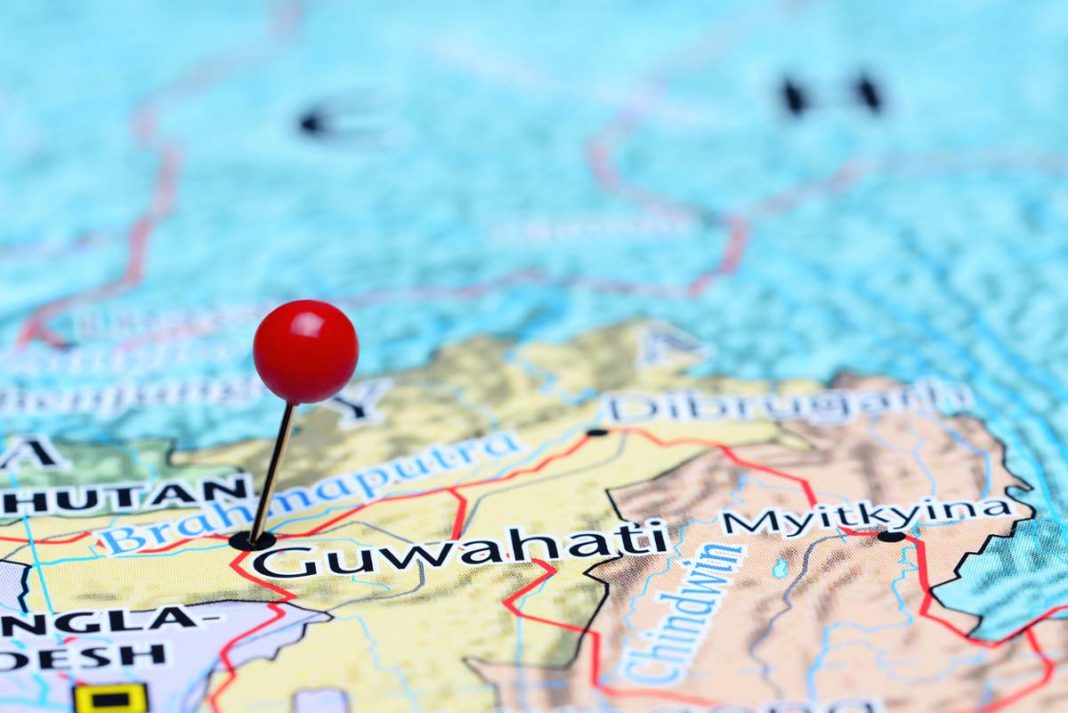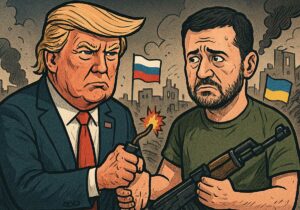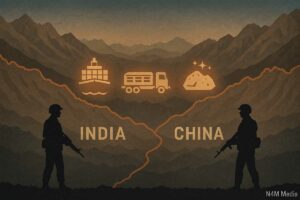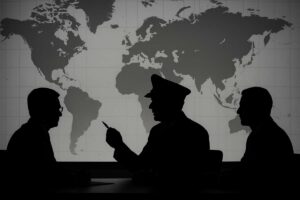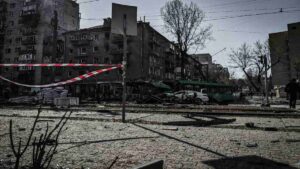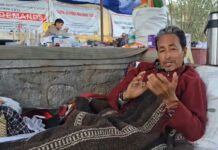Let us begin this with a few clarifications.
1. We need to accept that there's a genuine concern about illegal migration in Assam which is believed to have led to a demographic imbalance. 2. This article is not meant to target any particular party because a cursory glance through the chronology of events bears out the fact that nobody comes out looking good in this. 3. We would do well not to look at this through the Hindu-Muslim prism.
On 23rd September, social media got flooded with horrific videos coming out of Assam. A man, armed with a stick was shot at by cops, at point blank range, multiple times as per eye witness accounts. This was followed by repeated blows of the baton. And a photographer, attached with the Darrang District Administration, was seen pummelling his half-dead body, till he lay lifeless, an act that is best described as “Diabolic“. This was one of the two deaths on that day. #AssamHorror soon became a Social Media trend.
What was essentially, as described by the Bharatiya Janata Party led Assam Govt, an “Eviction Drive against illegal encroachment on government land” turned violent claiming two lives and injuring eleven policemen. It so happened that people being affected by this “drive” happened to be Bengali speaking Muslims, the most convenient bogeyman for any trouble that erupts in the state. And pretty soon it transformed into a “Locals vs Outsiders” narrative and this narrative took wings of its own. References to the horrible Nellie Massacre became the norm. “Nellie” happened almost 40 years ago. And we wish that it was the only reference point.
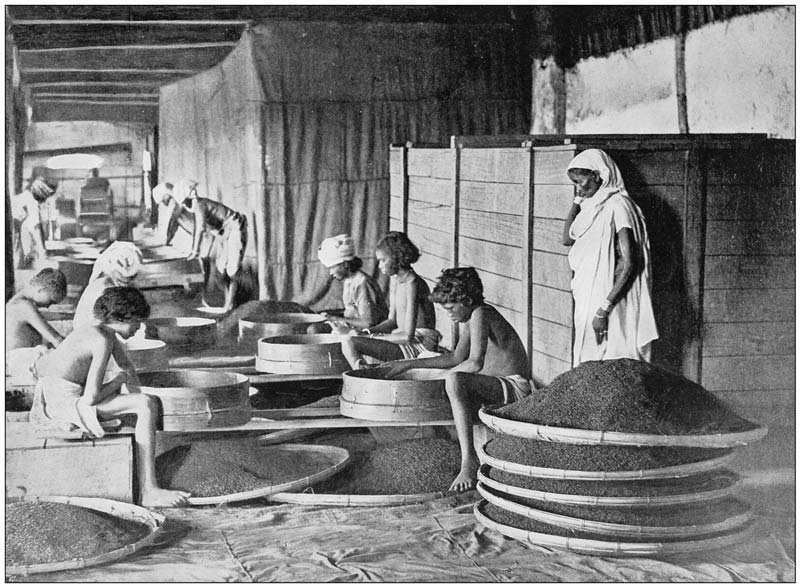
Nellie stands out for the sheer magnitude and scale of the massacre. But Assam is replete with such instances, both before and after Nellie. It’s Bhumiputra vs the Outsiders. The Bhumiputra could be an Axomiya or a Bodo. The Outsiders is always Bengali-speaking. Sometimes Hindus, other times, Miyahs, a pejorative term, often used to refer to the Bengali speaking Muslims in the state. The most recent example would be the Kokrajhar Riots. First in 2012 and then again in 2014.
In both the cases, the perpetrators were militants belonging to groups demanding a separate Bodoland and Bengali speaking Muslims. What was common for both was the delayed response by the then state government. Incidentally, the brains behind these, Bidai & Batha, two dreaded commanders of the erstwhile NDFB have been mainstreamed by the current regime. They will, in all likelihood escape any punishment. Under the guise of “reconciliation”.
If we went back further, just before Nellie, we have instances of Khoirabari in 1983 & further back, Goreswar in 1960, where the victims were Bengali speaking Hindu settlers. Many dub Khoirabari as a retaliation to Gohpur, where Axomiya speaking population were the victims.
Right after Khoirabari, Nellie happened. On 18 February 1983.
At least 1,800 people (unofficial figures run higher) from 14 villages – including Nellie – of Nowgong district in central Assam were left dead in the six-hour-long massacre that began at 8 in the morning. It came to be known as the Nellie Massacre.
The All Assam Students Union (AASU) and the Asom Gana Parishad (AGP), led by Prafulla Mahanta, had been spearheading Axom Andolan, or the Assam Agitation – an anti-foreigner movement in the state since 1979. Their main demand was that the “illegal immigrants” (Bangladeshis) be taken off the voter list as political parties, they claimed, were winning elections on the basis of illegal electoral rolls.
The movement tended to categorise all Bengalis as “Bangladeshis” – and the groups that felt the direct threat of the movement were the Hindu and Muslim Bengalis.
For the indigenous tribes and the Assamese, the agitation was a way to assert their rights over their land, but it was also the fear of losing jobs to “the other”.
Let us go back a bit. In March 1979, Lok Sabha member from the Janata Party, Hiralal Patwari, died necessitating a by-election in the Mangaldoi Lok Sabha Constituency, which had a heavy concentration of minority voters.
In the process of preparing for the by-election, a surge in the electorate was noticed by election officials. As per a report, prepared by the Election Commission, the population in 1971 census recorded an increase as high as 34.98 percent over 1961 census figures, and this figure was attributed to the influx of large number of persons from neighbouring countries, namely Bangladesh. The influx had become a regular feature, stated the report. A stage would be reached when Assam may have to reckon with the foreign nationals who, in all probability, would constitute a sizable percentage if not the majority of population in the state, the report concluded. The leaders of the Assam movement cited this report demanding for the boycott of the Assembly elections.
Other than the Axom Andolan, Assam also saw a consecutive collapse of several governments from 1979. Starting from the government led by Golap Borbora of the Janata Party that collapsed in 1979, right until 1982 when a Congress (I) government formed by Keshab Gogoi, only to be in power for two months, the state was in a constant state of political flux. After the imposition of President’s Rule, yet again, it was decided that a new Assembly was imperative in order to form a stable government. And hence the state was to go to polls during January-February, 1983.
Amidst all these, the state was already witness to numerous ethnic clashes, especially with the formation of the All Assam Minorities Students Union (AAMSU), which demanded that all those who came to Assam before 1971 be granted citizenship — in direct opposition to the AASU. However, the Central government was adamant about holding the elections in Assam by March 1983, without revising the electoral rolls. This was, predictably opposed by the AASU. The then Inspector General of Assam Police, KPS Gill, had concluded after some deliberation that polls could be conducted without much trouble in 63 assembly constituencies. But it was impossible to hold elections in 23 constituencies, based on ethnic composition. Nellie was one of the 23. And so, despite clashes between pro-election and anti-election groups, the elections were set to be held in the troubled state.
As obvious, in the areas with ethnic Assamese and indigenous population elections were boycotted more successfully. The Muslim Bengalis, however, in defiance of the anti-election protests were ready to cast their votes. A tense atmosphere shrouded Nellie, and the surrounding villages on 16 February after five Lalung children were found dead in the Lahorigate area near Nellie. The Lalung tribesmen were anti-polls and anti-foreigners.
At around eight in the morning, a huge armed mob had surrounded several Muslim-dominated villages and marched to the sound of drums and slogans like “Long Live Assam”. The mob consisted of Mikir, Bodo, Lalung or Tiwa tribes and some Assamese Hindus. They were well armed with machetes and country-made guns. In the massacre that followed, it was estimated that 1,800 people in all were brutally killed, but unofficial figures suggest that the number was as high as 3,000.
The 14 villages that were left utterly decimated in a matter of six hours were Alisingha, Khulapathar, Basundhari, Bugduba Beel, Bugduba Habi, Borjola, Butuni, Indurmari, Mati Parbat, Muladhari, Mati Parbat no 8, Silbheta, Borbori and Nellie.
In the aftermath of the massacre, 688 FIRs were registered, but only 299 were chargesheeted by the police. Moreover, none of those chargesheeted were prosecuted.
The state government formed an enquiry commission headed by TP Tewary, an IAS officer, to look into the circumstances that led to the violence and to scrutinise the measures taken to prevent it.
In May 1984, the commission produced a 547-page long report after interviewing officials and witnesses. It was however never tabled in the state Assembly, and the contents of the report was only made public after an RTI was filed.
According to the report, 14 villages around Nellie weren’t the only affected area. In some parts of state, Muslims were found to be the aggressors and in other parts Bengalis, Hindus & Muslims had colluded together. In other areas, tribal groups clashed with ethnic Assamese as well.
There was another person, whose role in this entire episode, often slips under the radar. At around the same time, Atal Bihari Vajpayee, as the BJP president, was campaigning in the state. In one of his speeches, Vajpayee was quoted as saying, “Foreigners have come here and the government does nothing. What if they had come into Punjab instead? People would have chopped them into pieces and thrown them away.” Atal Bihari Vajpayee was quoted by former MP Indrajit Guha during a debate on trust vote moved by Atal Bihari Vajpayee in May, 1996. Soon after his speech violence erupted in Nellie. Vajpayee had returned to New Delhi after his speech in Assam. The attributed portion of speech went uncontested in the Lok Sabha
15th August 1985 saw the culmination of the Assam Movement, with Central Government led by Rajiv Gandhi signing an Accord with the leaders of the movement.
The salient points of this Accord were:
- All those who had come to Assam between 1951 and 1961 were to be given full citizenship, including the right to vote.
- Those who came after 1971 were to be deported.
- Those who came between 1961 and 1971 were to be denied voting rights for ten years, but would enjoy all other rights of citizenship.
While Nellie, Khoirabari & North Kamrup can be attributed to the Assam Movement, what could be the trigger for Goreswar?
And the answer lies in the deeply fragmented Assamese society. The faultlines between Axomiya – non Axomiya, Bhumiputra – outsiders. Assam is a complex state. If too much diversity were ever a problem, Assam would be a prime example. Call it regionalism, sub-nationalism or ethnocentrism, these were always above religious divides. At least till the recent past. And political parties, over the years have fed on this. They’ve taken advantages of the faultlines. Let them fester. Every political group wanted an NRC. No one, barring BJP wanted CAA.
But why Assam doesn’t want the CAA is completely different from why someone in Calcutta or Delhi doesn’t want it. Barak Valley wants CAA for the very reason that Brahmaputra Valley doesn’t want it.
The current Chief Minister is playing a dangerous game. He has created a deadly cocktail of Hindutva with Axomiya sub-nationalism. And is ever ready with a dog-whistle against the Muslims. This has only brought to the fore, the deep-seated mistrust and resentment that the communities have for each other. One that was underlined by the images of the photographer jumping on the corpse of Moinal Haque, one of the 2 victims, of the eviction drive. Moinal Haque wasn’t responsible for this impasse. If we need to hold someone accountable, we need to go back to the Brits, who brought in Muslim farmers from present day Bangladesh to the then eastern part of Bengal Presidency. The Brits brought in Bengali-speaking clerks from present West Bengal. It was the political class of independent India that played both the sides against each other. Created an atmosphere of hate and distrust. Delayed in implementing accords. And this will continue. There’ll be more such incidents. Because trouble means good politics.

